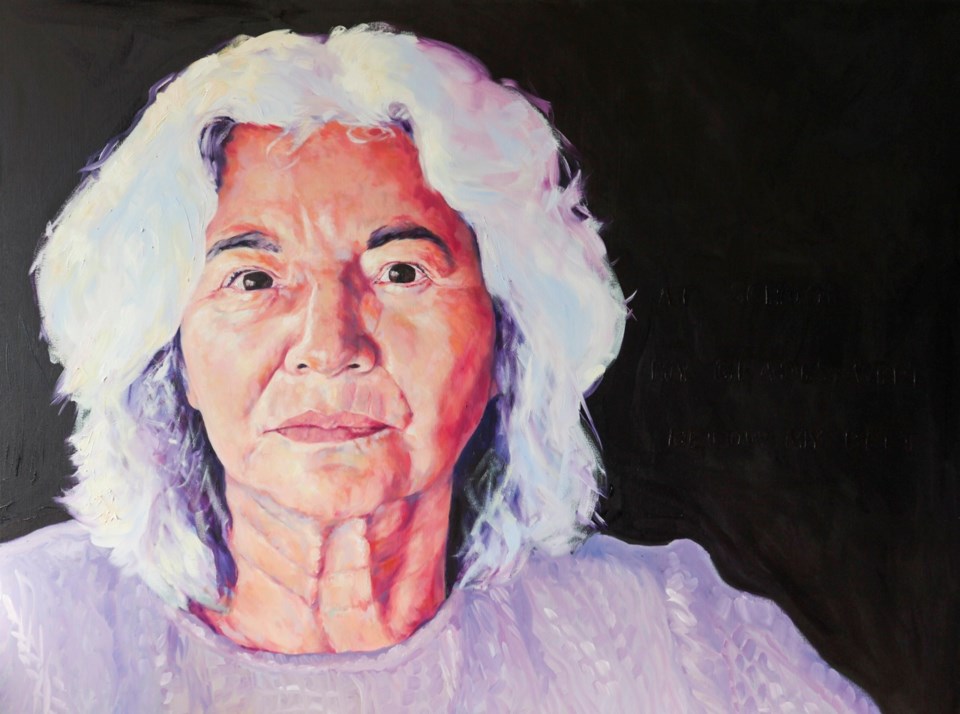The Estevan Art Gallery and Museum (EAGM) has a couple of new exhibits for people to view.
They Didn’t Know we were Seeds by Carol Wylie, and In the World but Not of It by Tim Smith, have been on display since June 25, and will remain at the EAGM until Aug. 27.
In her artist statement, Wylie said she attended the Saskatoon Holocaust Memorial Service in April 2016. As survivor Nate Leipciger spoke of his horrifying experiences in a Nazi death camp, and his ongoing efforts to educate and shed light on these atrocities, she was struck anew by the extent of abuse a human being can endure at the hands of another.
“Several events following that service occurred that brought to mind the issue of the residential school experience of 150,000 Indigenous children,” she wrote. “Indian Affairs superintendent Duncan Campbell Scott, in 1910, called residential schools The Final Solution, preceding Hitler’s similar pronouncement regarding the ‘Jewish problem,’” she wrote.
Separating families, cutting hair, and taking away names and assigning numbers were oppressive methods of dehumanizing and othering, she said. Interestingly, both groups of survivors have connected around strategies of survival and healing.
Holocaust survivors are elderly and dying, Wylie said. There will soon be no more first-hand accounts. After hearing Leipciger speak, Wylie felt the need to somehow acknowledge these extraordinary people who endured and survived unbelievable mistreatment and to find a way to preserve the personal nature of these memories.
“The connection between Holocaust and residential school survivors that had emerged for me, as a settler in Saskatchewan with its notorious history of residential schools, was the impetus behind including portraits of residential school survivors in this project,” she wrote. “I thought that listening to that history and those stories could be a small personal step toward the Truth and Reconciliation Commission’s calls for action, listening and bearing witness.”
All the residential school survivors who chose to participate entrusted her to share their story, through portraits, for which she is grateful.
As for Smith’s exhibit, he said in his artist’s statement that he has been documenting and building relationships with Hutterite communities in Manitoba over the past 12 years, ever since a chance encounter.
An Anabaptist group whose roots trace back to the 16th century Reformation, Smith pointed out Hutterites live communally on colonies throughout Western Canada and the northwestern U.S. Their culture continues to be preserved through deliberate separation from mainstream society and economic self-sufficiency.
Facing no overt threats from the outside world, they have grown to approximately 50,000 members living on colonies throughout North America. Members are provided for throughout their entire lives and on the whole experience less of the loneliness and isolation prevalent in the modern world.
“The importance given to engagement in family life, social life and spirituality, and the defined purpose for their lives means Hutterite communities meet many of the requirements to be considered Blue Zones; areas where health, happiness and life expectancy rates are higher than average,” Smith wrote.
However, this period of peace has its challenges as well. There are concerns amongst colony leaders that too much prosperity is eating away at the fabric of their society and too much contact with the outside world is watering down their culture.
Each colony must decide how rigidly they cling to their traditions versus how much they adapt to the increasingly connected outside world.
Smith’s work focuses on breaking down stereotypes about Hutterites and challenges simplistic reductionist ideas about who they are. Hutterites are often either romanticized or denigrated as simple, backwards, quaint and/or old fashioned.
He uses photography to document the breadth and complexity of the Hutterite experience as well as to show how colonies navigate the need to respond to the external pressures of the world around them while holding on to key traditions central to their faith.



